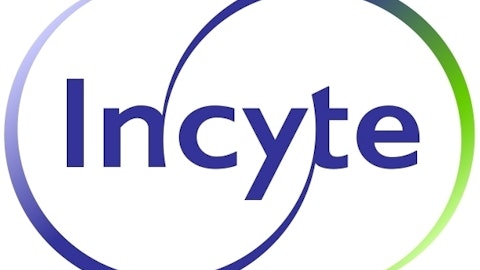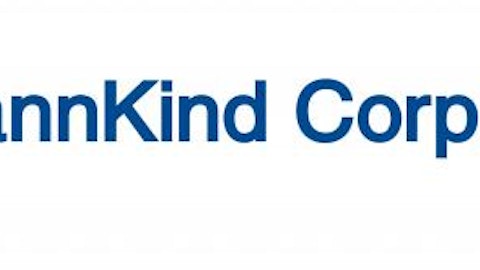The phase 2 data that Incyte Corporation (NASDAQ:INCY) presented on Wednesday was downright stellar.
For a subgroup of the patients, the hazard ratio for overall survival in late-stage pancreatic cancer patients taking Incyte Corporation (NASDAQ:INCY)’s Jakafi and Roche‘s Xeloda was 0.47. Put another way, Jakafi and Xeloda improved overall survival by 53% compared to Xeloda alone.
For the same subgroup, Incyte Corporation (NASDAQ:INCY) also said the six-month survival for patients taking Jakafi and Xeloda was 42% compared to 11% for those that received Xeloda alone.
Unfortunately, that’s pretty much all the data the company released, leaving unanswered questions.
What’s the subgroup?
Incyte Corporation (NASDAQ:INCY) wouldn’t say beyond that the patients were “identified prospectively as most likely to benefit from JAK pathway inhibition.” Jakafi, which is already approved to treat the treat bone marrow disease myelofibrosis, works by inhibiting the JAK pathway.
The biotech defined the group prospectively — that is, before the trial began — so it’s not like the company was mining the trial for subgroups where the drug worked. Still, it would be nice to know the rationale for the mystery subgroup.

Levy said that the company looked at a “very small number” of characteristics that Incyte Corporation (NASDAQ:INCY) believed might affect Jakafi’s efficacy. I’d have preferred there was only one subgroup, but assuming it’s only a couple, investors should be fairly confident the effect is real. As you increase the number of subgroups, you increase the likelihood you’ll find something, but that also increases the likelihood that you’ll find something that looks like an improvement, but actually just happened randomly.
“We have a lot of comfort that this is a repeatable finding,” Levy said.
Incyte Corporation (NASDAQ:INCY) is likely holding onto the characteristic of the subgroup for competitive reasons. The company doesn’t need to develop a companion diagnostic, so it should be something that Gilead Sciences, Inc. (NASDAQ:GILD) or Cell Therapeutics Inc (NASDAQ:CTIC), which both have JAK inhibitors in development, could easily replicate. As far as I know, neither Gilead’s momelotinib nor Cell Theraputics’ pacritinib are currently being tested in anything other than myelofibrosis. Incyte is already going to have potential competition in myelofibrosis, there’s no reason to give competitors a helping hand in pancreatic cancer.
How many months?
While the hazard ratio looks good, it would be nice to know the median survival between the two treatment groups to see how much longer Jakafi is extending survival.
Levy said the company decided to present the six-month survival data because it was a “more meaningful number.” Median survival, Levy contends, “would have been misleading for the overall effect in this trial.”
Reading between the lines, it appears that Jakafi isn’t extending survival by all that much when you look median survival. It’s possible that there’s a subgroup of the subgroup that responds really well, which drives up the six-month survival but hardly moves the median survival.
That’s potentially still meaningful — most patients with advanced pancreatic cancer live less than a year — but without the full data, it’s just speculation.
The big tell
These questions will eventually be answered, most likely when the full data is presented at a medical meeting or when the protocol for the phase 3 trial is disclosed.
But investors might get an idea of the strength of the data before that from Incyte Corporation (NASDAQ:INCY)’s partner Novartis AG (ADR) (NYSE:NVS), which can opt in to pay for the expanded indication. The pharma will presumably get to see a lot more data than we have in the press release. Novartis opting in would be a good sign that knowledgeable people think the data is strong enough to pursue further.
The article Pop-Worthy Data, Incyte, but Let’s See More originally appeared on Fool.com.
Fool contributor Brian Orelli has no position in any stocks mentioned. The Motley Fool recommends Gilead Sciences.
Copyright © 1995 – 2013 The Motley Fool, LLC. All rights reserved. The Motley Fool has a disclosure policy.




